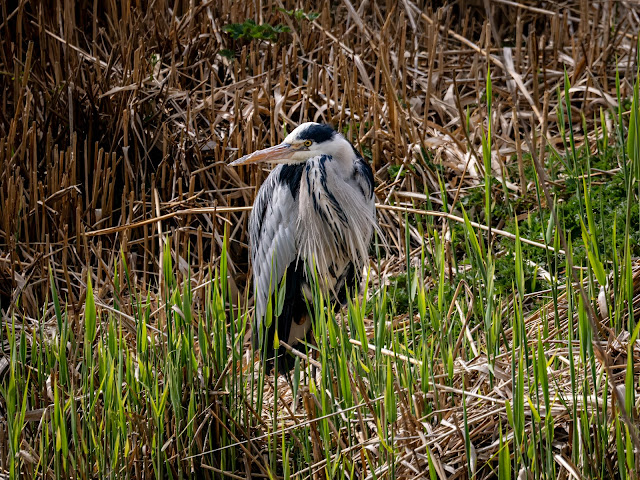RSPB Rainham Marshes is not far from my home and easily visited by public transport which I do several times a year.
RSPB Rainham Marshes protects 411 hectares of ancient, low-lying grazing marsh in the Thames Estuary. Its complex of wet grassland, reedbeds, scrapes, pools and ditches, together with grassland, scrub and woodland, supports many breeding and wintering birds. Wildlife also includes scarce wetland plants and insects and a key population of the nationally declining Water Vole.
Today, I had a very enjoyable and successful 5 hour visit walking round the circular trail and spending extended time in the Purfleet Hide, the Shooting Butts Hide and the Ken Barrett hide.
My visit provided 2 additions to my 2025 UK year list taking it to 134 species: Nightingale and Common Tern.
A singing male Nightingale outside the Ken Barrett hide,
which I briefly saw, was totally unexpected for this site and my first of the
year ahead of planned visits to RSPB Canvey Wick and Danbury Common to see and hear this
species.
I did expect to see Common Tern and I saw 9 birds across the reserve although there may have been some duplication.
Disappointingly, I failed to see the male Garganey which had been recorded for several days prior to my visit and neither did I hear or see a Grasshopper Warbler which I would expect during spring.
The highlights of my visit were as follows (heard only records in italics): Nightingale (1 singing male), Sedge Warbler (at least 15 singing males, 4 seen), Common Whitethroat (2 singing males), Chiffchaff (10 singing males, 3 seen), Blackcap (2 singing males but unseen), Cetti’s Warbler (at least 20 singing males, 2 seen), Bearded Tit (2 heard calling but unseen), Reed Bunting (1 heard calling but unseen), Skylark (1), Pied Wagtail (2), Marsh Harrier (1), Kestrel (1), Lapwing (at least 20), Avocet (at least 20), Common Redshank (at least 20), Black-tailed Godwit (at least 10), Common Snipe (1), Curlew (1), Great White Egret (1), Little Egret (6), Grey Heron (6), Mallard (at least 30), Shoveler (at least 30), Tufted Duck (at least 30), Common Pochard (at least 20), Teal (at least 20), Shelduck (6), Gadwall (5), Wigeon (1 male), Common Tern (9), Mediterranean Gull (at least 2), Little Grebe (7), Great Crested Grebe (3), Coot (c.30), Moorhen (4), Mute Swan (8), Canada Goose (c.50), Greylag Goose (c.50), Cormorant (6)
In addition, I recorded the following butterflies: Orange Tip (1), Peacock (3)
Here are some photos from my visit ....
Love nature .... act now























No comments:
Post a Comment
If you feel like commenting on my blog, you can contact me by completing the comment form below. I will respond to all comments and enquiries and constructive criticism will always be welcomed.